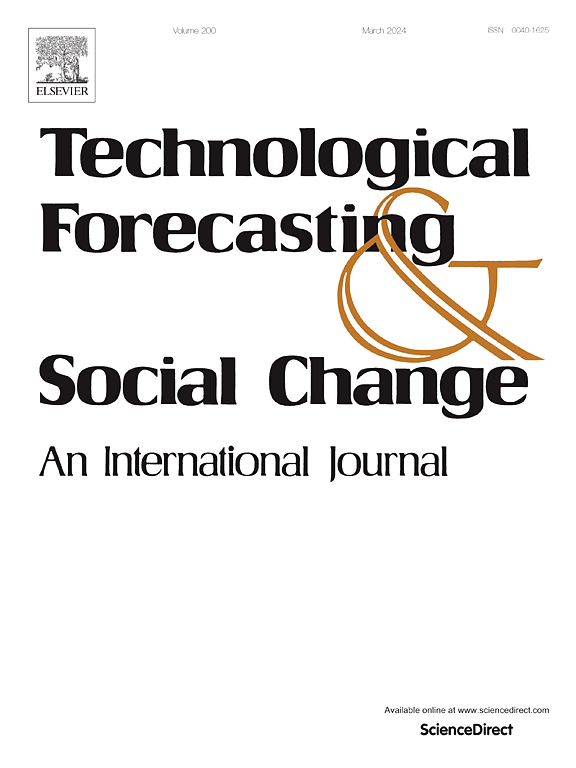调整数字战略和资源以创建医疗保健4.0组织:对智能运营和智能工作的影响
IF 13.3
1区 管理学
Q1 BUSINESS
Technological Forecasting and Social Change
Pub Date : 2025-09-05
DOI:10.1016/j.techfore.2025.124339
引用次数: 0
摘要
本研究通过研究数字战略、内部和外部数字资源以及网络嵌入性如何支持医疗保健组织智能运营和智能工作的发展,调查了实施医疗保健4.0 (H4.0)所需的组织基础。虽然先前的研究主要集中在医疗保健流程的技术驱动改进上,但很少关注人员、流程和技术的社会技术整合,特别是从战略和管理的角度。通过对303家医院的调查,我们评估了数字战略和数字资源在推进H4.0中的作用,通过智能运营(流程自动化技术)和智能工作(支持工人的技术)的双重视角进行了概念化。利用层次回归和自举技术,我们发现数字化战略对智能运营和智能工作都有积极影响。然而,内部和外部数字资源仅在智能工作的背景下调解这种关系。这表明,虽然流程自动化主要依赖于战略清晰度,但支持工作人员需要更强大的资源结构。此外,我们发现医疗网络嵌入性正向调节数字战略与外部数字资源的关系,而不是内部资源。这表明,外部合作可以增强医院将战略意图转化为对外部资源的可操作利用的能力,特别是在支持智能工作方面。我们的研究结果有助于更深入地了解战略结盟和网络嵌入如何塑造医疗保健中的社会技术系统。它们为寻求设计整体数字化转型战略以构建H4.0组织的管理者提供了指导。本文章由计算机程序翻译,如有差异,请以英文原文为准。
Aligning digital strategy and resources to create Healthcare 4.0 organizations: Implications for smart operations and smart working
This study investigates the organizational foundations required to implement Healthcare 4.0 (H4.0) by examining how digital strategy, internal and external digital resources, and network embeddedness support the development of smart operations and smart working in healthcare organizations. While prior research has predominantly focused on technology-driven improvements in healthcare processes, less attention has been given to the sociotechnical integration of people, processes, and technologies, particularly from a strategic and managerial perspective. Drawing on a survey of 303 hospitals, we assessed the role of digital strategy and digital resources in advancing H4.0, conceptualized through the dual lenses of smart operations (technology for process automation) and smart working (technology to support workers). Using hierarchical regression and bootstrapping techniques, we find that digital strategy positively influences both smart operations and smart working. However, internal and external digital resources mediate this relationship only in the context of smart working. This indicates that while process automation relies primarily on strategic clarity, supporting workers requires stronger resource structures. Additionally, we find that healthcare network embeddedness positively moderates the relationship between digital strategy and external digital resources, but not internal resources. This suggests that external collaborations enhance a hospital's ability to translate strategic intent into actionable use of external resources, particularly in support of smart working. Our findings contribute to a deeper understanding of how strategic alignment and network embeddedness shape sociotechnical systems in healthcare. They offer guidance for managers seeking to design holistic digital transformation strategies to build H4.0 organizations.
求助全文
通过发布文献求助,成功后即可免费获取论文全文。
去求助
来源期刊
CiteScore
21.30
自引率
10.80%
发文量
813
期刊介绍:
Technological Forecasting and Social Change is a prominent platform for individuals engaged in the methodology and application of technological forecasting and future studies as planning tools, exploring the interconnectedness of social, environmental, and technological factors.
In addition to serving as a key forum for these discussions, we offer numerous benefits for authors, including complimentary PDFs, a generous copyright policy, exclusive discounts on Elsevier publications, and more.

 求助内容:
求助内容: 应助结果提醒方式:
应助结果提醒方式:


